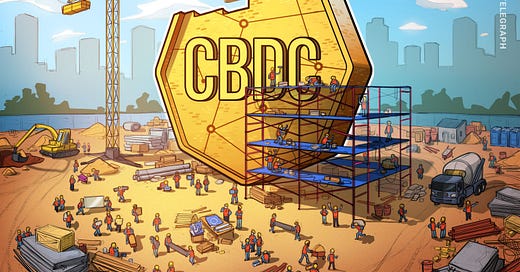This could be the last in this series of CBDCs (see Part 2, Part 1). This transition of money into digital currencies will be one of the most defining transformations in the history of money. This will be a big process and it will be not thrust on the general public just like how demonetization happened in India. It will be gradual but the adoption can be much faster than we think.
However there are many challenges to overcome. A few of the major ones are as follows:
1) Interoperability
For a digital currency to have any utility to people and businesses, it needs to coexist and interact with other payment mechanisms in that domestic market. For an even greater level of interoperability, Central Banks will need the ability to actually exchange assets between ledgers, rather than issuing instructions via an API. The key will be for all central banks to enable cross-issuance of CBDCs on interoperable ledgers.
Each individual CBDC can create its own rules and policies that best suits its domestic market. However CBDCs should also be united and guided by collective protocols that will enable them to cooperate seamlessly with other CBDCs and digital currencies. Every CBDC will need to have some basic level of interoperability built into it from the beginning.
2) Public and private partnerships
As investors this will be the area that will be most interesting to us. The infrastructure supporting the existing financial system is vast and varied and not likely to be redundant any time soon. CBDC technology will not replace what we already have anytime soon. A layered architecture model where new systems are built on top of the existing infrastructure makes perfect sense. The innovations will mostly come from the private sector.
It will be very much like what Mr Uday Reddy, Tanla’s CEO explained to shareholders yesterday in his investors meet. The government was faced with a problem in pesky calls and spamming. They gave an open invitation to private companies to come up with a solution. Tanla was the first to seize the opportunity.
A major benefit of layered architecture is that central banks can call on the expertise of the private sector to implement CBDC infrastructure without compromising the integrity of the rest of its system. Many private companies have developed digital currencies and they are already very well advanced in technology and experience in running them. This can surely help central banks to make initiatives up and running more efficiently than starting something on their own.
While blockchain transactions are typically validated by many public validators, Central banks could restrict this ability to a handful of trusted partners such as commercial banks or other digital currency providers.
This would give central banks the flexibility and functionality that comes with decentralized ledgers, while retaining enough centralized control over their monetary policies and economic management.
3) Neutral bridge currencies
Cross border transactions will remain the biggest hurdle in implementing a global functioning CBDC system. The major challenges are speed, cost, scalability, frictionless fund movement, foreign exchange, on-demand liquidity. A neutral bridge asset can supply healthy, alternative solutions for all the above. This is where a crypto currency like Ripple/XRP could come into play. We will dwell on the benefits of XRP in the coming articles.
Abraham George is a seasoned investment manager with more than 40 years of experience in trading & investment and portfolio management spanning diverse environments like banks (HSBC, ADCB), sovereign wealth fund (ADIA), a royal family office and a hedge fund.






